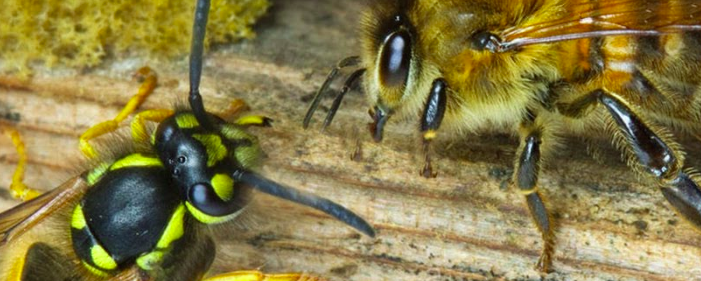
Apoids are all bees, whether social or solitary. The drones , which are regarded as bees, are also part of this superfamily of Hymenoptera . These insects have two pairs of membranous wings. When they fly, their wings are coupled by a row of hooks located on the hind wings. At rest, the wings disengage and are folded over the abdomen.
Apoids have a narrow waist. This characteristic gives great flexibility to the movements of the abdomen , allowing a female bee to lay an egg at the bottom of a cell, for example.
Most bees are black or brownish in color, but some are brilliantly colored a bluish-green or metallic green, while others turn yellow to orange or black. Many bees have hairless bodies and others have significant hairiness.
What you need to know
Apoids exhibit characters related to Sphecoid wasps . Like bees, adult wasps forage on flowers for nectar. The main difference between these two groups, however, is that bees use pollen as their main source of protein and feed their larvae in the same way. On the contrary, in wasps, the larvae are carnivorous, insects and spiders constituting their main source of food.
There are seven families of apoids in the world, including six in Quebec: Colletids, Andrénides, Halictides , Melittides, Mégachilides and Apides. The first five families include solitary bees, although some of them display some degree of socialization. The last family, the Apides, includes social and highly social species, such as the honey bee , Apis mellifera Linnaeus, and bumblebees ( Bombusspp.). These insects live in colonies. The majority of solitary bees are said to be non-social, that is, there is no worker caste or cooperation between individuals. Each female builds her own nest and collects her food. Solitary bees supply their larvae by providing them with the total amount of pollen and nectar necessary for their development before closing the cells. Adult females of the genera Apis and Bombus feed their larvae as needed throughout their development.
Bees have grinder-lick-type mouthparts . They suck nectar from flowers with their glosse or “tongue” and use their mandibles in the construction of their nests, alveoli or cells.
There are three types of nests in solitary bees: nests dug in the ground, those installed in hollow trees or galleries bored in dead wood, and nests shaped with resin or mud and small pebbles. In the nest, the cell walls are made of wax, fragments of leaves, petals or resin.
Ecological roles
Bees have morphological structures that make them exceptionally efficient pollinators (mouthparts, branched hairs, pollen brushes, harvesting devices, etc.).
Solitary bee species are increasingly used to pollinate various crop plants.